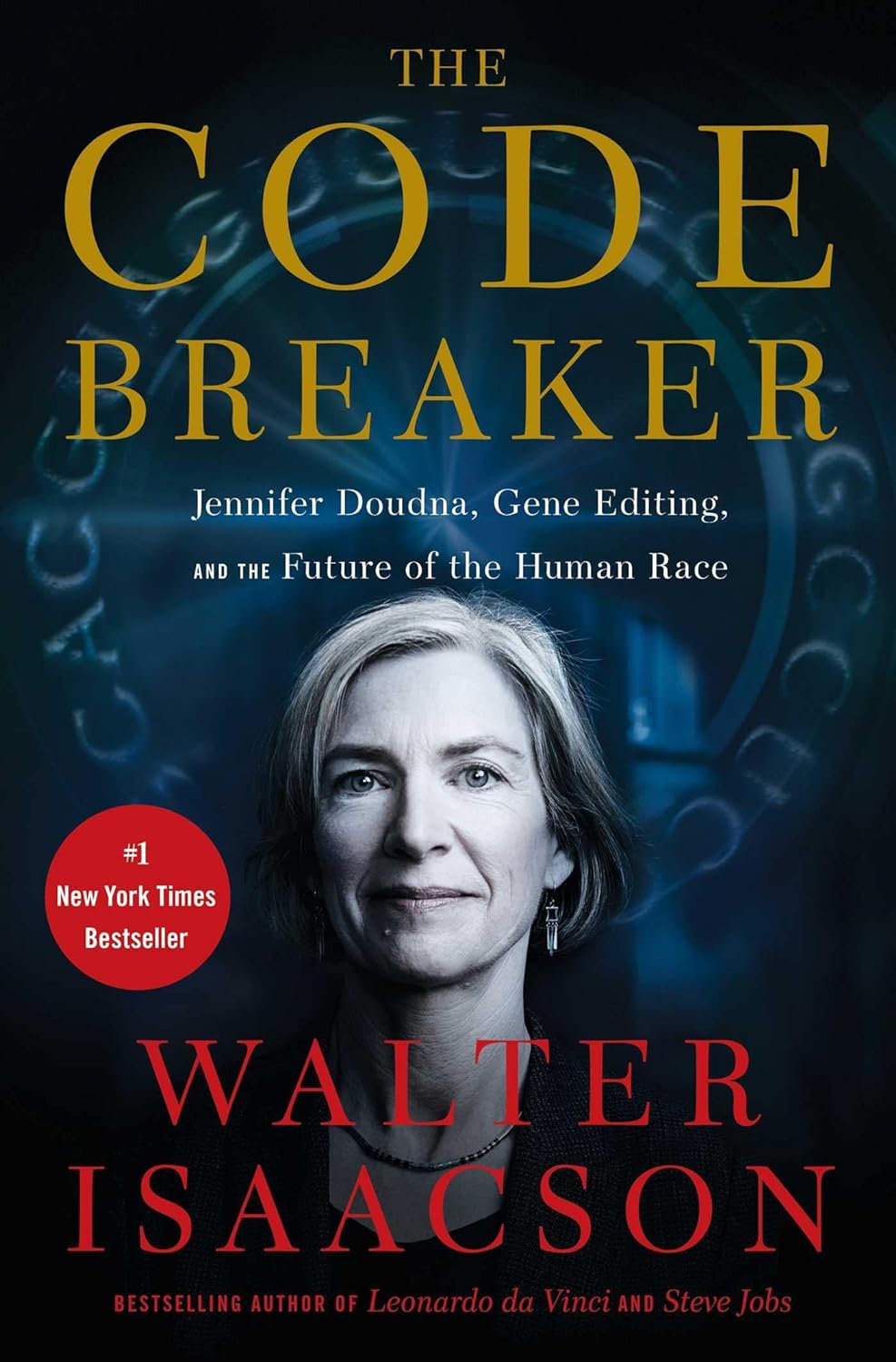
As with all Walter Walter Isaacson biographies, this is a fairly long book. I got stuck in Pennsylvania for an extended period because of the Crowdstrike debacle, so I was afforded quite a bit of time to read this in airports and on planes. It took less than two weeks to read the nearly 500 pages.
This book covers the story of the discovery of CRISPR and its use as a gene editing tool. I had heard of it previously to picking up the book. I knew it involved gene editing, but I really did not understand its implications in detecting and curing diseases. I though it was just a way to selectively create designer organisms. It does in fact do that, and has actually been used in China, in 2018, to create three AIDS-resistant human babies, but there are many more applications that do not come with moral conundrums.
Bacteria have been using CRISPR for millions of years to fend off viruses. When a bacteria is exposed to a virus, it adds a little genetic code to its DNA so that it can identify and defend against a future exposure to a like virus. All future generations of this bacteria will have this coding, and thus be protected from this virus. Several scientists identified this behavior in bacteria and sought ways to understand and control it. Being able to control this process allows someone to edit the genes of virtually any living thing. The key figure in this book is the American scientist, Jennifer Doudna. She, along with French scientist, Emmanuelle Charpentier, were awarded the 2020 Nobel prize in chemistry for their work on CRISPR. The book notes several other scientists that made similar advancements in gene editing using CRISPR, but Doudna and Charpentier were recognized as having figured out its workings first.
In addition to gene editing, CRISPR technology can also be used to detect disease. Many of the COVID tests used in the last pandemic, utilized CRISPR to create low-cost, home-based tests. Many of the COVID vaccines also used CRISPR technology. One of the key discoveries is that RNA is actually the component that directs changes in DNA. In the presence of the appropriate enzyme, RNA can be used to edit genes in cells.
Immunizations created using CRISPR for defense against a virus such as COVID can be manufactured far more cost-effectively than conventional methods that employ a non-viable variant of the virus. They can also be adapted to be used against other viruses, as needed.
I believe we have just scratched the surface of what biotechnology may bring. Currently, many of the treatments are prohibitively expensive, but there already exists cures for previously untreatable diseases such as sickle cell anemia. It has already cured one woman. The initial cost for treatment was about one million dollars. Sickle cell afflicts approximately 100,000 people in the US. Sickle-cell generally means that the afflicted will not see life beyond their 50’s. Worry was that it would bankrupt the healthcare system, but new technology is always expensive at first. Costs will come down. CRISPR appears to have applications for many diseases, including many cancers. We are at the very beginning of this technology and there will be many new applications discovered in the coming years.
